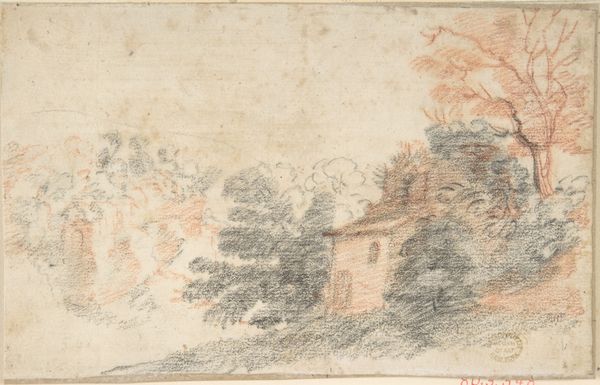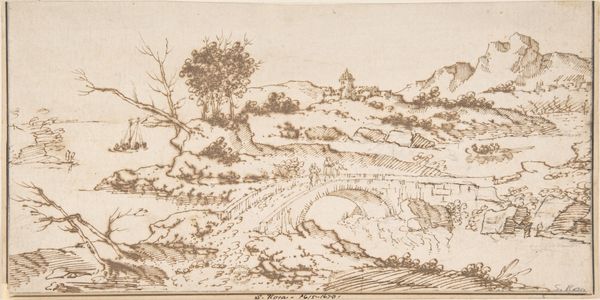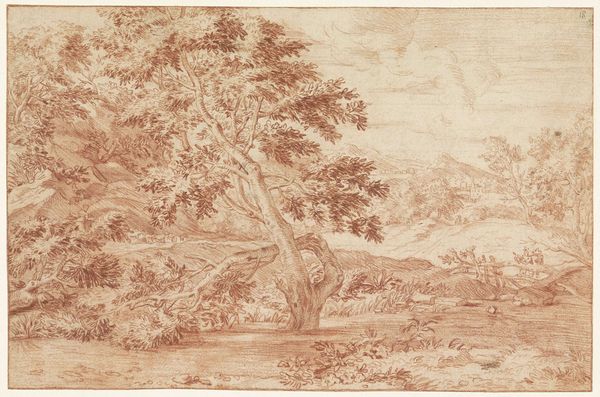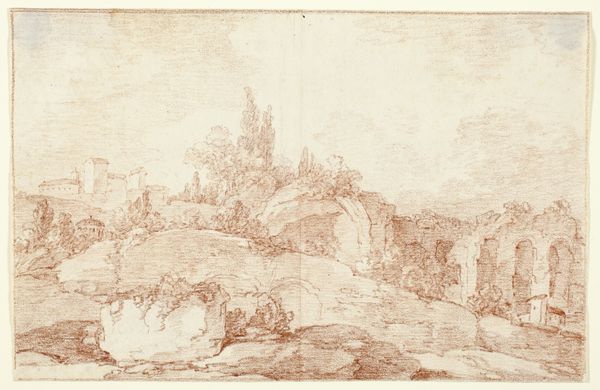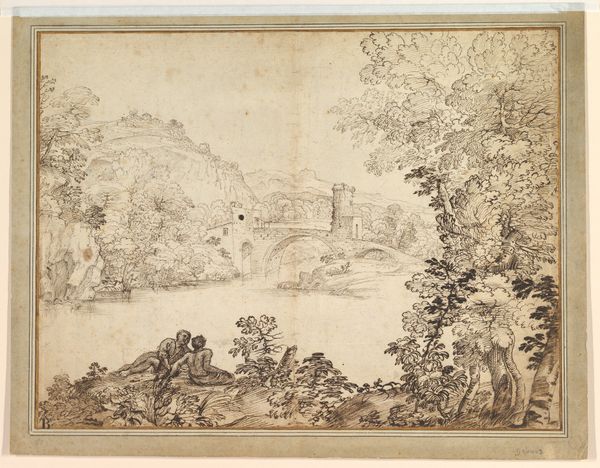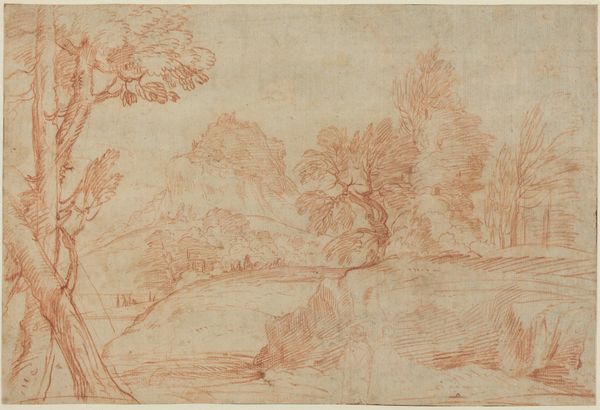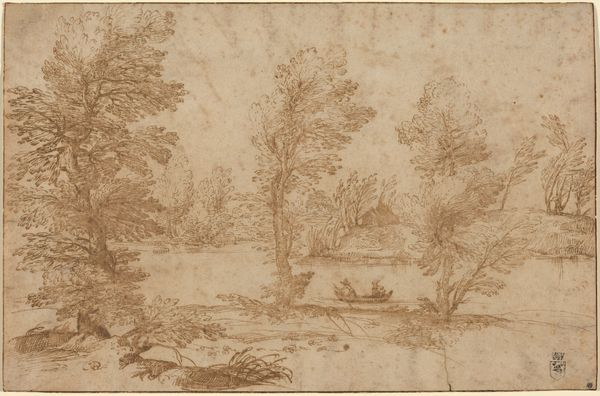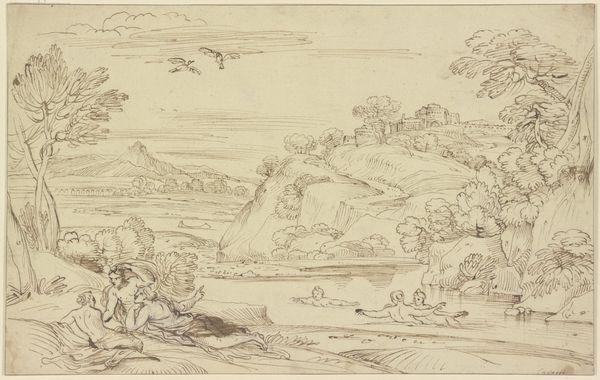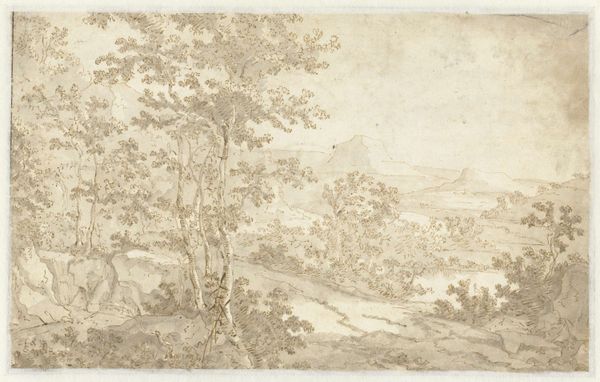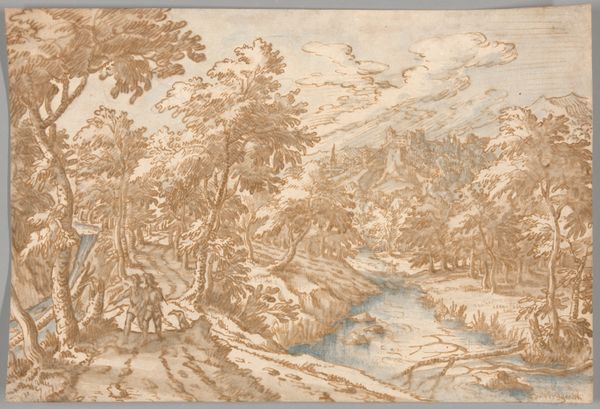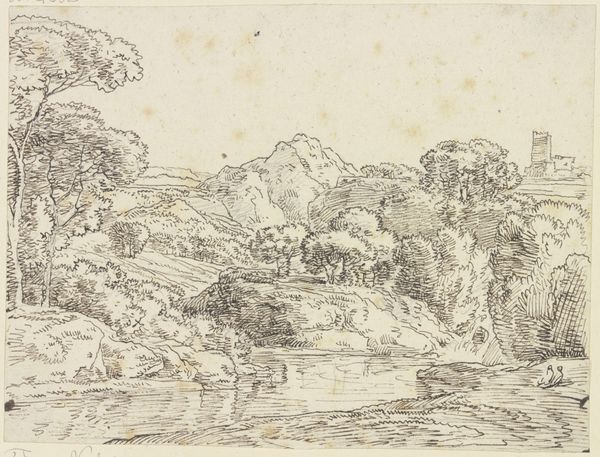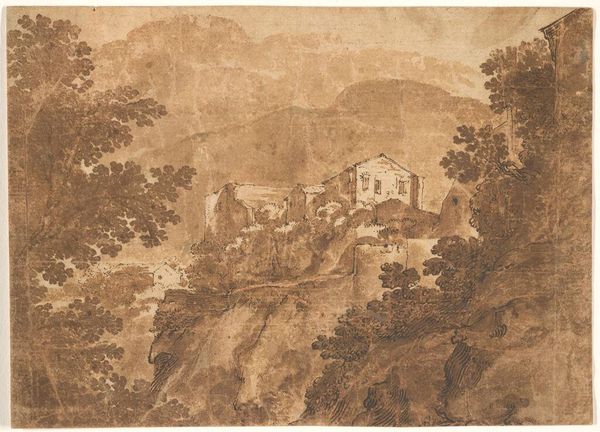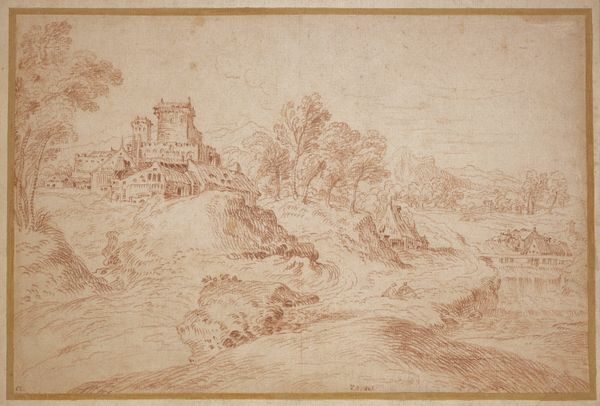
drawing, tempera, pencil
#
drawing
#
tempera
#
landscape
#
classical-realism
#
geometric
#
pencil
Dimensions: 5-1/4 x 10-1/2 in. (13.3 x 26.7 cm)
Copyright: Public Domain
Editor: So, this is "Landscape," an anonymous drawing from somewhere in the 1700s, using tempera and pencil. It’s a pretty standard scene, a building nestled amongst trees, but there’s something unsettling in the repetition of the lines. How do you interpret this work? Curator: Considering the era, I’d argue that this ‘standard scene’ masks a more complex engagement with power and ownership. The landscape, during the 18th century, becomes increasingly tied to notions of property, control, and even colonial ambition. This ‘unsettling’ quality you perceive may be the tension between the idealized picturesque and the very real social and political forces shaping those landscapes. Does the somewhat rigid structure superimposed onto nature hint at this push for control? Editor: That's fascinating! I hadn't considered it beyond the aesthetic. Do you mean that even the *drawing* itself could represent a claiming of the land? Curator: Exactly! Think about the act of observation, and of documentation. This wasn't a photograph, but a hand-drawn record. Who was commissioning or creating these landscapes? And what were they used for? Often, they were visual assertions of ownership and dominance. It also evokes philosophical debates of the period - the tensions of reason against the romantics! How does the idea of "nature" get constructed, controlled, even commodified? Editor: So, even without knowing the artist, we can still consider the drawing as a product of specific social and historical power dynamics? Curator: Absolutely. The absence of a known artist further complicates the narrative. Was it intentional anonymity to protect themselves? A conscious act of claiming space? Consider this artwork a document and open inquiry. Editor: I hadn't thought of landscape art in terms of activism, but now I understand better how it participates in shaping perspectives on the natural world. Curator: Precisely. Art is always in conversation with power, whether it resists it or reinforces it. Thinking of landscape as a field of socio-political inquiry opens up new possibilities for interpretation.
Comments
No comments
Be the first to comment and join the conversation on the ultimate creative platform.
